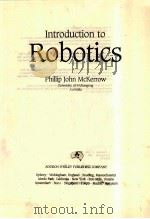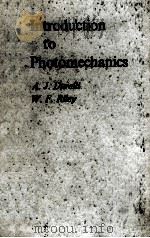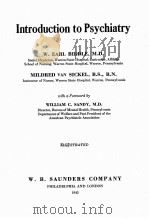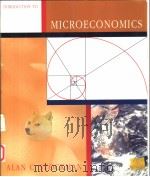《INTRODUCTION TO ROBOTICS》
| 作者 | ARTHUR J.CRITCHLOW 编者 |
|---|---|
| 出版 | 未查询到或未知 |
| 参考页数 | 491 |
| 出版时间 | 没有确切时间的资料 目录预览 |
| ISBN号 | 0023255900 — 求助条款 |
| PDF编号 | 812058628(仅供预览,未存储实际文件) |
| 求助格式 | 扫描PDF(若分多册发行,每次仅能受理1册) |

Chapter 1 Overview1
1.1 Historical Perspective1
1.1.1 Early Automata1
1.Bird Organ1
2.Automated Flute Player3
3.Maillardet’s Automaton3
1.1.2 Robots and Robotics5
1.1.3 Robot Relatives5
1.Manipulators5
2.Teleoperators7
3.Exoskeletons7
4.Prostheses and Orthoses8
1.2 Definitions and Classifications of Robots8
1.2.1 By Type of Control9
1.Point-to-Point Robots9
2.Continuous-Path Robots9
3.Controlled-Path (Computed Trajectory) Robots9
4.Servo versus Nonservo Robots9
1.2.2 By Capability Level9
1.Sequence-Controlled Machines9
2.Playback Machines10
3.Controlled-Path (Computed Trajectory) Robots10
4.Adaptive Robots10
5.Intelligent Robots10
1.2.3By Configuration10
1.Cartesian Coordinates10
2.Cylindrical Coordinates11
3.Polar Coordinates11
4.Revolute Coordinates11
1.2.4Mobile versus Fixed Robots12
1.Fixed Robots on a Pedestal Base12
2.Fixed Robots Supported from Above12
3.Fixed Robots on a Track12
4.Fixed Robots on an Overhead Gantry13
5.Mobile——Wheeled Vehicle13
6.Mobile——Tracked Vehicle13
7.Mobile——with Four to Six Legs14
8.Mobile——with Two Legs14
1.3 Why Are Robots Used?15
1.3.1Reduced Production Cost15
1.3.2 Increased Productivity16
1.3.3 Improved Product Quality16
1.3.4 Operation in Hazardous and Hostile Environments16
1.3.5 Improved Management Control16
1.3.6 Integrated Systems16
1.3.7 Meeting OSHAs Standards17
1.3.8 Decreased Reaction and Debugging Time17
1.3.9 Longer Useful Life17
1.4 Applications of Robots by Type17
1.4.1Sequence——Controlled Machines17
1.4.2 Playback Machines17
1.4.3Adaptive Robots18
1.Assembly of Small Products18
2.Inspection Appliances18
3.Adaptive Welding19
1.4.4 Intelligent Robots19
1.5 Components of a Robot19
1.5.1Links and Joints19
1.5.2 Wrist20
1.5.3 End Effectors20
1.5.4 Drives and Drive Mechanisms20
1.5.5 Controls21
1.5.6 Sensors21
1.5.7 Interfaces22
1.6 Robot Systems22
1.6.1What Is a System?22
1.6.2System Goals and Requirements22
1.Application Environment23
2.Range of Motion Required23
3.Speed Required23
4.Type of Control Required23
5.Sensory Requirements23
6.Interaction with Other Equipment23
7.Production Quantities Required23
1.6.3Classification of Robot Systems24
1.Simple System24
2.Complex System24
3.Integrated System25
1.7 Present Status26
1.7.1Markets27
1.7.2 Manufacturers——Share of the Market27
1.7.3 Breakdown of Robots by Application29
1.8 Future Trends29
1.8.1Social, Political, and Economic Factors29
1.Effect on Employment30
2.Worker Reaction30
3.Political and Economic Factors31
1.8.2New Applications31
1.Australian Sheep Shearing31
2.Agricultural Applications32
3.Household and Hobby Robots32
4.Other Applications33
1.8.3Long-Range Goals34
1.Integrated Systems34
2.Intelligent Systems34
3.Self-Reproducing Systems34
Exercises34
References35
Chapter 2 Early Development of the Modern Robot37
2.1 Development Timetable37
2.2 Industrial Development38
2.2.1 Unimation Corporation39
2.2.2 Versatran Corporation41
2.2.3 Other Industrial Developments in the United States44
1.Cincinnati Milacron44
2.2.4 Foreign Industrial Developments45
1.ASEA45
2.TRALLFA45
3.Japanese Industrial Robots45
2.3 Techical Development46
2.3.1 Stanford Research Institute (SRI)46
1.SRI Intelligent Automaton Program46
2.Industrial Robot with Vision48
2.3.2 Stanford University48
2.3.3 Massachusetts Institute of Technology (MIT)49
2.3.4 Other Early Developments50
2.3.5 U.S.Government51
1.Financial Support51
2.Technical Guidance and In-House Research51
2.3.6 Japanese Research51
Exercises53
References54
Chapter 3 Mechanical Considerations57
3.1 Physical Configurations58
3.1.1 Coordinate Systems58
3.1.2 Work Envelopes59
1.Rectangular Coordinate Robots59
2.Cylindrical Coordinate Robots60
3.Spherical (Polar) Coordinate Robots60
4.Revolute (Jointed) Coordinate Robots60
3.2 Robot Motions63
3.2.1 Degrees of Freedom63
3.2.2 Arm and Body Motions63
3.2.3 Wrist Motions63
3.3 Drive Mechanisms63
3.3.1 Linear Drives63
1.Rack and Pinion63
2.Lead Screw64
3.Ball Screws64
4.Hydraulic Cylinder Drives64
5.Pneumatic Cylinder Drives65
3.3.2 Rotary Drives65
1.Gear Trains65
2.Timing Belt Drives67
3.Harmonic Drives67
4.Rotary Hydraulic Motors69
5.Direct-Drive Torque Motors69
3.3.3 Wrist Mechanisms71
3.3.4 Linear versus Rotary Drives71
3.3.5 Brakes71
3.4 End Effectors72
3.4.1 Grasping and Holdihg Techniques72
3.4.2 Qualifications for End Effectors72
1.Grippers72
2.Friction Holding73
3.Vacuum Handling74
4.Specialized End-of-Arm Tooling75
3.5 Determining Specifications75
3.5.1 Definitions of Mechanical Terms76
3.5.2 Design Considerations77
1.Operating Cycle77
2.Accuracy and Repeatability77
3.Life Expectancy, Reliability, and Maintainability78
3.5.3 Mechanical Positioning Accuracy and Repeatability Factors78
1.Gravitational Effects78
2.Acceleration Effects79
3.Backlash Error80
4.Thermal Effects80
5.Bearing Play81
6.Windup81
3.6 Mobiiity81
3.6.1 Unimation-Stanford Mobile Vehicle Project82
3.6.2 Moravec’s CMU Rover83
3.6.3 The TO-ROVER84
Exercises85
References86
Chapter 4 Drive Methods88
4.1 Hydraulic Drives88
4.1.1 Linear Drive Cylinders89
4.1.2 Rotary Actuators90
4.1.3 Electrohydraulic Control Valves90
1.Flapper Servo Valve90
2.Jet Pipe Servo Valve91
4.1.4 Closed-Loop Servos91
4.1.5 Training a Hydraulic Robot92
4.1.6 Hydraulic Power Sources93
4.1.7 Advantages and Disadvantages of Hydraulic Drive93
4.2 Pneumatic Drives93
4.3 DC Electric Motors95
4.3.1 Types of DC Electric Motors95
1.Iron-Core PM DC Motors96
2.Surface-Wound PM DC Motors96
3.Moving-Coil PM DC Motors96
4.3.2 DC Motor Analysis and Modeling97
4.3.3 Open-Loop Torque Control with Current Amplifier99
4.3.4 Open-Loop Torque Control with Voltage Amplifier99
4.3.5 Closed-Loop Torque Control99
4.3.6 DC Power Sources and Power Amplifiers99
1.Rectification100
2.Regulation100
3.Power Amplifiers and Switching Circuits101
4.3.7 Solid-State Switching Devices102
4.4 Electric Stpper Motors103
4.4.1 Stepper Motor Operation103
4.4.2 Types of Stepper Motors107
4.4.3 Open-Loop Control108
4.4.4 Crosed-Loop Control108
4.4.5 Specialized Control Electronics for Stepper Motors108
4.5 Selection of Drive Methods for Different Applications109
4.5.1 Hydraulic Versus Electric Drives109
4.5.2 Comparison of Electric DC Motors and Electric Stepper Motors110
4.5.3 Pneumatic Drives for Lowest Cost111
4.5.4 Drive Selection Calculations111
Exercises112
References113
Chapter 5 Sensors for Robots115
5.1 Sensory Needs of Robots116
5.1.1 Robot Control and Self-Protection116
5.1.2 Programmable Automation117
5.1.3 Manipulation of Workpieces117
5.1.4 Collision Avoidance117
5.1.5 Assembly Operations117
5.1.6 Inspection118
5.1.7 Search and Recognition118
5.1.8 User Safety118
5.2 Sensor Evaluation and Selection118
5.2.1 Contact versus Noncontact Sensors119
5.2.2 Evaluation Criteria for Sensors119
1.Sensitivity119
2.Linearity119
3.Range119
4.Response Time119
5.Accuracy120
6.Repeatability120
7.Resolution120
8.Type of Output120
5.2.3 Physical Characteristics120
1.Size and Weight120
2.Reliability120
3.Interfacing121
5.3 Available Sensory Techiques121
5.3.1 Contact Sensing121
1.Switches121
2.Piezoelectric Transducers121
5.3.2 Position and Displacement Sensing122
1.Potentiometers122
2.Linear Variable Differential Transformers (LVDTs)123
3.Resolvers125
4.Absolute Optical Encoders125
5.Incremental Optical Encoders127
5.3.3 Force Sensing128
1.Elastic Elements128
Simple Elastic Elements——Springs and Bars128
Cantilever Beams129
Micromechanical Accelerometers129
2.Strain Gages130
Gage Factor130
Application of Strain Gages131
Temperature Compensation131
Multidirectional Strain Gages——Rosettes132
5.3.4 Torque Sensing132
5.3.5 Force-Torque Sensing Systems133
5.3.6 Proximity Sensing135
1.Optical Proximity Sensor135
2.Eddy Current135
3.Ultrasonic Echo Ranging136
4.Magnetic Sensors137
5.Capacitive Sensors138
5.3.7 Touch Sensing and Taction138
1.Instrumented Remote Center Compliance Sensor (IRCC)138
2.Tactile Sensor Arrays141
3.Very-Large-Scale Integration (VLSI) Computing Array143
5.4 Conditloning Sensor Output145
5.4.1 Conversion145
1.Operational Amplifiers146
5.4.2 Calibration146
5.4.3 Linearizing146
5.4.4 Amplifying, Comparing, and Buffering147
5.4.5 Demodulation147
5.5 Analyzing Sensor Data147
5.5.1 Analysis Programs147
5.5.2 Verification148
5.6 Sensors for Special Appllcations148
5.7 Future Work148
5.8 Key Terms148
Exercises148
References149
Chapter 6 Controls and Control Methods151
6.1 Classilication of Robots by Control Method151
6.1.1 Nonservo Robots151
1.Bang-Bang Controlled Robots151
2.Sequence-Controlled Robots151
6.1.2 Servo-Controlled Robots152
1.Point-to-Point Operation152
2.Continuous-Path Operation152
3.Categories of Servo System Operation153
6.2 Control of Servo Robots153
6.2.1 Point-to-Point Control153
1.Potentiometer Control154
2.Point-to-Point Control Using Computer Memory154
Analog-to-Digital Conversion155
Memory Size Required156
Digital-to-Analog Conversion156
6.2.2 Teaching and Pendant Control (Teach-boxes)156
6.2.3 Continuous Path157
1.Path Types157
Standard Servo Control157
Feedforward or Look-Ahead Control158
Controlled-Trajectory Control158
2.Teaching of a Continuous Path158
3.Programming158
6.3 Advanced Control Methods158
6.3.1 Controlled Trajectory159
1.Lagrange-Euler Formulation160
2.Newton-Euler Formulation160
6.3.2 Obstacle Avoidance161
6.3.3 Adaptive Operation164
6.3.4 Intelligent Robots165
6.4 Closed-Loop Servos165
6.4.1 Nomenclature and Symbols (ANSI Standard)166
6.4.2 Block Diagram Representation167
1.Cascaded Blocks167
2.Parallel Blocks168
3.Feedback Loops168
6.4.3 Laplace Transforms——Frequency Domain168
1.Unit Step Function U(s)170
2.Application of the Laplace Transform170
6.4.4 System Modeling170
6.4.5 Servo Analysis Methods176
6.5 Servo System Component176
6.5.1 Inputs176
6.5.2 Summing Circuits177
6.5.3 Control Elements177
6.5.4 Power Amplifiers177
6.5.5 Drive Motors178
6.5.6 Position Sensors178
6.5.7 Conditioning Circuits178
6.5.8 Feedback Circuits178
6.5.9 Velocity Sensors178
6.6 Kinematlcs Analysls and Control178
6.6.1 Homogeneous Transformations179
1.Rotation Transformations181
2.Translation184
3.Interpreting the Homogeneous Matrix186
6.6.2 Coordinate Transformation188
1.Joint-to-World Transformations189
2.Coordinate Frame Parameters189
6.6.3 Control Methods194
1.Resolved Motion Rate Control195
2.Cerebellar Model Articulation Control195
3.Computed Torque or Inverse Problem195
4.Resolved Acceleration Control196
5.Modular Reference Adaptive Control196
6.Compliant Motion Control196
6.7 Controller Design Example197
6.7.1 Cartesian and Joint Coordinates197
6.7.2 Positional Control of a Single Joint199
1.Single-Joint Controller200
2.Determination of the Gain Constants206
3.Steady-State Error for Joint Controller206
6.7.3 Conveyor Following with a Single-Joint Controller207
1.Velocity Error and Compensation207
2.Compensation for the Centrifugal Term207
3.Acceleration Error and Compensation208
4.Effect of Feedforward Compensation208
6.7.4 Controller for a Robot with Multiple Joints208
1.Lagrangian Formulation of Dynamic Equations208
6.7.5 Path Tracking by a Robot with Multiple Joints209
6.7.6 Effect of Feedforward Compensation on a Multiple-Joint Robot209
6.7.7 Conclusion210
Exercises210
References211
Chapter 7 Computer Hardware for Robot Systems214
7.1 Hardware Needs for Robot Systems214
7.1.1 System Supervision214
7.1.2 Trajectory Calculation and Control215
7.1.3 Vision215
7.1.4 Sensor Monitoring215
7.1.5 Safety Monitoring215
7.1.6 Input/Output215
7.2 Logic Clrcuits and Computer Elements216
7.2.1 Logic Circuits (Logic Gates)216
1.AND Circuit216
2.OR Circuit217
3.NOT Circuit (Inverter)217
4.NAND Circuit218
5.NOR Circuit218
6.Exclusive-OR (XOR) Circuit218
7.Three-State Switches219
7.2.2 Boolean Algebra219
7.2.3 Flipflops220
7.2.4 Decoders222
7.2.5 Multiplexers223
7.2.6 Counters224
7.2.7 Registers224
1.Storage Registers225
2.Shift Registers225
7.3 Computer System Organization225
7.3.1 Organization of the Central Processing Unit (CPU)226
1.Architecture of the Intel 8080226
2.Fetch and Execution Instructions229
3.Instruction Execution230
7.3.2 Arithmetic and Logic Units (ALU)232
1.Binary Addition232
2.Arithmetic and Logic Operations233
7.3.3 Control Unit235
7.3.4 Memories235
7.3.5 Bus Standards237
1.S-100 Bus (IEEE 696 Bus)237
2.Multibus (IEEE 796)239
3.Versabus241
4.IEEE 488 Bus (GPIB Bus)241
5.Other Buses242
7.4 Peripheral Equipment242
7.4.1 Data Storage Devices242
1.Magnetic Disks243
2.Magnetic Tapes245
7.4.2 Printers245
1.Dot Matrix Serial Printers246
2.Daisy Wheel Serial Printers247
3.Nonimpact Serial Printers248
4.Line Printers——Impact Type248
Drum Printers248
Chain Printers249
5.Line Printers-Nonimpact Type249
7.4.3 Visual Display Terminals249
7.4.4 Vision250
7.4.5 Sensors250
7.4.6 Robot Servos251
7.4.7 Auxiliary Equipment251
7.5Input/Output Operatlons and Control253
7.5.1 Device Addressing253
7.5.2 Interfacing and Interface Standards253
1.RS-232 Interface253
2.Parallel-to-Serial and Serial-to Parallel Conversion255
3.Parity256
4.Handshaking Signals258
7.5.3 Interrupts and Interrupt Handling258
1.Vectored Priority Interrupt261
7.5.4 Direct Memory Access (DMA)261
7.6 Advanced Computer Systems262
7.6.1 Improved Microprocessors263
7.6.2 Advanced System Organization267
7.6.3 Networks269
Exercises270
References272
Chapter 8 Robot Software274
8.1 Robot Software Requirements274
8.1.1 Need for Programming and Control274
8.1.2 Monitors and Operating Systems275
1.Monitors276
2.Operating Systems276
8.1.3 Assembly Languages and Higher-Level Languages (HLLs)276
8.1.4 Compilers and Interpreters278
8.1.5 Types of Users278
8.1.6 Definitions of Terms279
8.2 Levels of Programming281
8.2.1 Sequence Control281
8.2.2 Teach-by-Guiding (or Teach-by-Showing)281
8.2.3 Teach by Teach Box281
8.2.4 Off-Line Programming or Preprogramming——Single Robot Arm282
8.2.5 Programming——Integrated System282
8.2.6 Adaptive Systems283
8.2.7 Intelligence Systems283
8.3 Functions Performed by Programming283
8.3.1 Motion Control284
1.Types of Motion284
2.Trajectory Planning285
3.Velocity and Acceleration Control285
4.Force and Torque Control285
5.End Effector Control286
6.Obstacle Avoidance286
7.Motion Coordination286
8.3.2 Adaptive Control Using Sensory Information287
1.Initiating and Terminating Actions287
2.Choosing Among Alternative Actions287
3.Determining the Identity and Position of Objects288
4.Constraint Compliance288
8.3.3 System Supervision and Control289
1.Supervision of Motion Control and Adaptive Control290
2.Interfacing with External Devices290
3.Coordination Functions290
4.Data Processing and Storage290
8.3.4 Intelligent Activities (Artificial Intelligence)291
1.Knowledge Representation291
2.World Modeling291
3.Task Specification292
4.Decision Making292
8.4 Present Robot Languagues——Features and Problems293
8.4.1 Evolution of Robot Languages293
1.MHI (1960-1961)294
2.WAVE (1970-1975)294
3.AL294
4.POINTY295
5.VAL (1975-Present)295
6.AML (1977-Present)296
7.PASCAL297
8.PAL297
9.MCL (1978-Present)298
10.RAIL299
11.HELP299
12.JARS299
13.RPL299
14.ADA300
8.4.2 Language Evaluation Criteria300
1.Available Control Structures300
2.Multiple Tasking Capability300
3.Rotation, Translation, and Vector Specifications301
4.Motion Control301
5.Software Engineering Features301
8.5 Programming Examples for Existing Languages301
8.5.1 VAL302
1.Types of Arguments Used302
2.Trajectory Control Methods305
8.5.2 The AL System at the Stanford Artificial Intelligence Laboratory (SAIL)307
1.Design Philosophy of AL307
2.AL System Hardware309
3.Current AL Software Organization311
8.5.3 IBM’s AML Language312
1.AML System Software312
2.AML316
3.Commands in AML317
4.Examples of AML Application319
Exercises322
References322
Chapter 9 Robot Vision325
9.1 Capturing the Image326
9.1.1 Scanning a Scene326
9.1.2 Standard Television Scanning——RS-170 Standard327
9.1.3 Electronic Scanners: Vidicon and Orthicon328
9.1.4 Solid-State Camera328
1.Charge-Coupled Devices (CCDs)328
2.Charge-Injection Devices (CIDs)329
3.Area Camera Systems329
9.1.5 Scanning Laser Camera332
9.1.6 Linear Arrays332
9.1.7 Random Access Devices332
9.1.8 Obtaining Depth and Range Information (in Three Dimensions)332
1.Specialized Lighting (Structured or Contrived)333
2.Projection Patterns334
3.Alternative Ranging Methods335
4.Time-of-Flight Range Finders336
9.2 Frame Grabbers336
9.2.1 Flash Digitizers336
1.Analog-to-Digital Converters337
9.3 Vision Processors338
9.3.1 Microprocessors for Vision Systems339
9.3.2 Multiple Processors and Special-Purpose Systems340
1.Parallel Image Processing340
2.Architecture of the Massively Parallel Processor (MPP)342
9.3.3 Vision Processors in Japan342
9.3.4 Special-Purpose Hardware343
1.Real-Time Digital Image Enhancement343
9.4 Image Storage and Retrieval344
9.4.1 High-Speed Memory344
9.4.2 Disk Files345
9.4.3 Magnetic Bubble Memories345
9.5 Picture Representation345
9.5.1 Digitization345
9.5.2 Image Compression346
1.Differencing347
9.5.3 Memory and Special Considerations348
9.6 Preprocessing349
9.6.1 Local Transformation349
9.6.2 Global Transformation350
1.Histogram Equalization350
2.Fourier Transform352
9.6.3 Noise Removal353
9.7 Edge Detection354
9.7.1 Edges and Lines354
9.7.2 Local Edge Elements355
9.7.3 Boundary Tracking (Segmenting)358
9.8 Recognizing Objects359
9.8.1 Template Matching359
9.8.2 The Hough Transform360
1.Application of the Hough Transform361
9.8.3 Syntactic Methods363
9.8.4 Feature Recognition Methods363
1.Image Parameter Measurements364
2.Local Feature Focus System367
9.9 Scene Understanding367
9.9.1 Knowledge Representation368
9.9.2 Three-Dimensional Scenes369
9.9.3 Feedback to the Robot370
9.10 Interfacing and Control370
9.11 Examples of Vision Systems371
9.11.1 SRI Vision Module371
9.11.2 CONSIGHT——General Motors Vision System373
Exercises375
References376
Chapter 10 Applications of Robots380
10.1 Machine Loading and Unloading380
10.1.1Press Tending381
10.2 Material Handling383
10.2.1Palletizing384
10.2.2 Packaging385
10.3 Fabrication387
10.3.1Investment Casting388
10.3.2 Grinding389
10.3.3 Deburring389
10.3.4 Fettling389
10.3.5 Routing389
10.3.6 Drilling390
10.3.7 Water Jet Cutting390
10.3.8 Electrical Wire Harness Manufacture390
10.3.9 Application of Glues, Sealers, Putty, and Caulking Materials391
10.4 Spray Painting and Finishing392
10.4.1Application Methods392
10.4.2 Advantages of Robots393
10.4.3 Robot Characteristics Required394
10.4.4 Programming of Finishing Robots396
10.4.5 General Motors Finishing System396
10.5 Spot Welding397
10.6 Arc Welding399
10.6.1Simple Welding401
10.6.2 Tactile Seam Following401
10.6.3 Through-the-Arc Sensing401
10.6.4Vision Guidance Systems402
1.General Electric ——WeldVision System402
2.Unimation, Inc.——UNIVISION System402
3.Adaptive Technologies, Inc.——Adaptavision 3-D402
4.Automatix, Inc.——Robovision Welding System402
10.6.5 Payoff for a Simple Robotic System404
10.7 Assembly Applications404
10.7.1Electronics Assembly405
10.7.2 Westinghouse APAS System407
10.7.3 Robotic Assembly in Italy410
10.8 Inspection and Test411
10.8.1Three-Dimensional Measurement411
10.8.2 Robot Plus Vision (or Other Sensors)411
10.8.3 Vision Alone414
10.9 Auxillary Equipment414
10.9.1Conveyors415
10.9.2 Automatic Guided Vehicles (AGVs)415
10.9.3 Positioners415
10.9.4 Feeders417
10.9.5 Compliant Wrists417
10.9.6 End Effectors418
10.9.7 Fences and Safety Shields419
10.10 Optimizing Robotic Systems420
10.10.1 Investigation420
10.10.2 Planning421
10.10.3 Implementation421
10.10.4 Evaluation and Improvement422
10.11The Future Factory423
10.12Management Considerations427
10.12.1 Economic Justification427
1.Payback Period428
Capital Investment429
Savings429
Operating Costs430
Payback Calculation430
2.Return on Investment430
3.Discounted Cash Flow (Internal Rate of Return)431
10.12.2 Improvement of Product Quality432
10.12.3 Effect on People432
10.12.4 Compliance with Legal Requirements433
10.12.5 Efficiency of Operations433
10.12.6 Flexibility and Growth Potential433
10.12.7 Effects on Organizational Structure434
10.12.8 Effects on the Future of the Organization434
Exercises435
References436
Appendix A: Computer Notation and Codes439
Appendix B: Mathematical Operations443
Appendix C: Glossary of Robotic Related Terms449
Index467
《INTRODUCTION TO ROBOTICS》由于是年代较久的资料都绝版了,几乎不可能购买到实物。如果大家为了学习确实需要,可向博主求助其电子版PDF文件。对合法合规的求助,我会当即受理并将下载地址发送给你。
高度相关资料
-

- INTRODUCTION TO PARALEGALISM
- 1997 IRWIN
-

- INTRODUCTION TO ECONOMICS AND INTRODUCTION TO MACROECONOMICS
- 1996 The Dryden Press
-

- Introduction to psychology
- 1986 Dennis Coon
-

- ROBOTICS
- 1987 MIR PUBLISHERS. MOSCOW
-

- INTRODUTION TO ROBOTICS
- 1991 ADDISON-WESLEY PUBLISHING COMPANY
-

- INTRODUCTION TO PSYCHOLOGY
- 1999 PEARSO CUSTOM PUBLISHING
-

- INTRODUCTION TO PHOTOMECHANICS
- 1965 INTRODUCTION TO PHOTOMECHANICS
-

- INTRODUCTION TO CHEMISTRY
- 1993 SAUNDERS COLLEGE PUBLISHING
-

- INTRODUCTION TO ETHICS
- 1998 MCGRAW-HILL
-

- INTRODUCTION TO PSYCHIATRY
- 1943 W. B. SAUNDERS COMPANY
-

- INTRODUCTION TO MICROECONOMICS
- 1996 THE DRYDEN PRESS
-

- INTRODUCTION TO MACROSOCIOLOGY
- 1992 PRENTICE HALL
提示:百度云已更名为百度网盘(百度盘),天翼云盘、微盘下载地址……暂未提供。➥ PDF文字可复制化或转WORD


